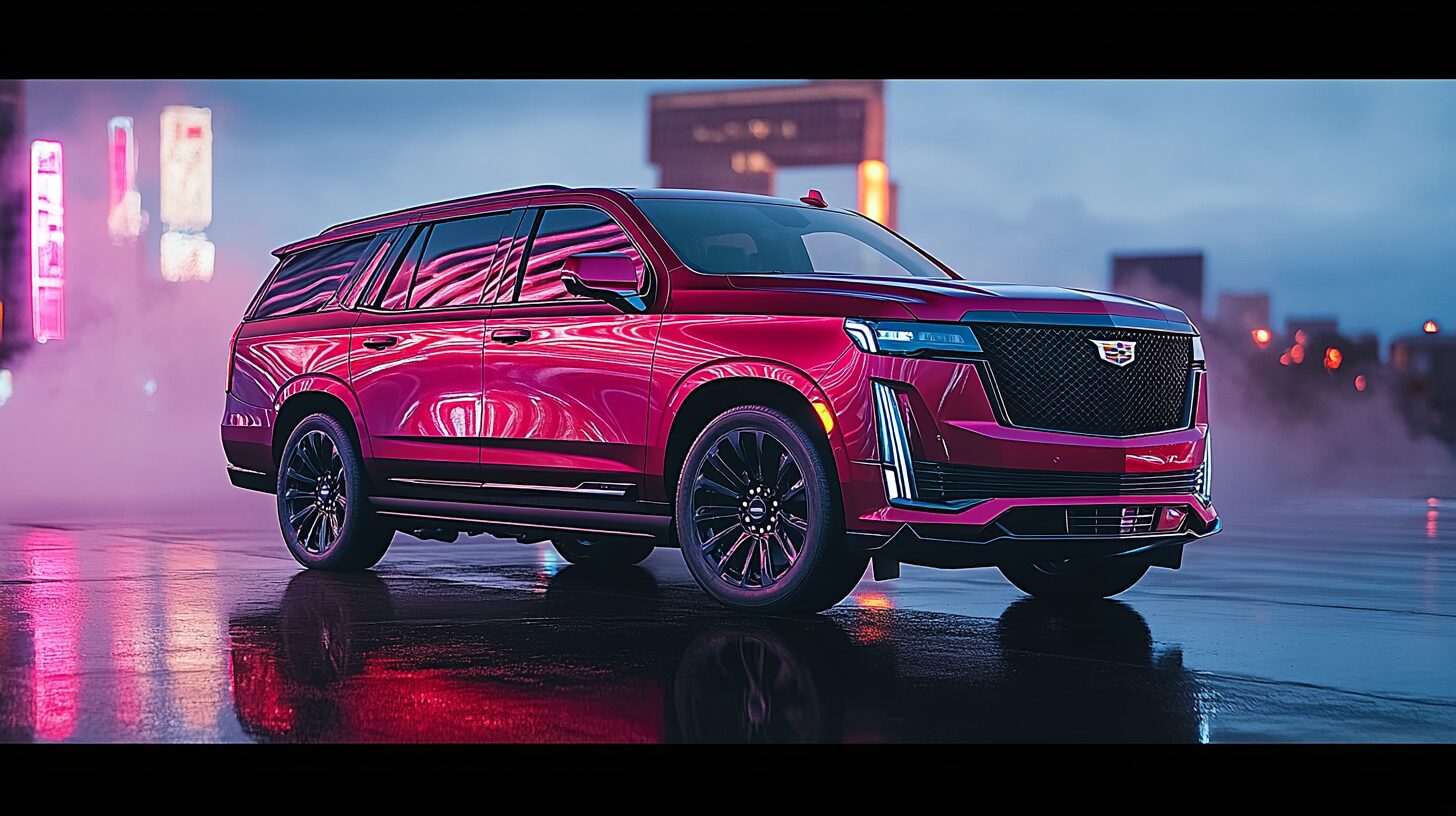M1 vs. 450 SLC 5.0: Limited-Production Legends
The late 1970s saw a significant shift in the automotive industry characterized by the emergence of high-performance cars, particularly the homologation specials required for motorsport competition. Among the most celebrated examples from this era are the BMW M1 and the Mercedes-Benz 450 SLC 5.0. Both vehicles reflect the philosophies of their respective manufacturers and offer distinct driving experiences, appealing to automotive enthusiasts and collectors alike. This article analyzes the performance and design of these limited-production legends.
Overview of BMW M1 and Mercedes-Benz 450 SLC 5.0
The BMW M1 debuted in 1978 as the first model developed by BMW’s newly formed M division. The car was designed to participate in the Group 4 racing category, and its production was limited to 453 units to meet the homologation requirements. The M1 is well-regarded for its sharp handling, lightweight construction, and distinctive styling.
On the other hand, the Mercedes-Benz 450 SLC 5.0 emerged positioned as a grand touring coupe with a focus on luxury and performance. This variant of the SLC series was produced in limited numbers as well, primarily due to its racing pedigree in the Group 1 and Group 2 categories. The 450 SLC 5.0 is noted for its comfort, user-friendly driving dynamics, and a powerful V8 engine.
Performance Comparison
Performance is a critical aspect to consider when comparing the BMW M1 and the Mercedes-Benz 450 SLC 5.0. Each vehicle offers a different experience, largely determined by their engineering philosophy and design intentions.
BMW M1 Performance Specs
- Engine: The M1 features a 3.5-liter inline-six engine that outputs approximately 273 horsepower and 243 lb-ft of torque.
- Transmission: It is equipped with a 5-speed manual transmission, which allows for precise gear changes.
- Weight: The car weighs around 1,200 kg (2,640 lbs), contributing to its exceptional power-to-weight ratio.
- Top Speed: The M1 can reach a top speed of approximately 162 mph.
- 0-60 mph: It can accelerate from 0 to 60 mph in about 5.6 seconds.
Mercedes-Benz 450 SLC 5.0 Performance Specs
- Engine: The 450 SLC is powered by a 5.0-liter V8 engine, delivering around 240 horsepower and 280 lb-ft of torque.
- Transmission: A 4-speed automatic transmission is standardized, focusing on a smooth driving experience.
- Weight: The 450 SLC weighs approximately 1,350 kg (2,976 lbs), which affects its performance metrics.
- Top Speed: It can achieve a top speed of roughly 130 mph.
- 0-60 mph: The car has a 0-60 mph time of about 8.0 seconds.
When comparing the performance figures, the BMW M1 clearly outshines the Mercedes-Benz 450 SLC 5.0 in terms of acceleration and top speed. The M1’s lighter weight and sporty engine contribute to an agile driving experience that appeals to enthusiasts seeking a pure sports car feel.
Design Elements
BMW M1 Design
The design of the BMW M1, crafted primarily by Italdesign under the direction of Giugiaro, stands as a hallmark of late-1970s automotive styling. Key design elements include:
- Body Shape: The M1’s low-slung, wedge-shaped profile is both aerodynamic and aesthetic, capturing the essence of a sports car.
- Front End: The unique front fascia encompasses pop-up headlights, contributing to its distinctive look while enhancing aerodynamics.
- Interior: Inside, the M1 offers a driver-focused cockpit, featuring high-back bucket seats, and a minimalist dashboard layout aimed at reducing weight.
Mercedes-Benz 450 SLC 5.0 Design
The Mercedes-Benz 450 SLC 5.0 demonstrates a different design philosophy that emphasizes elegance and comfort. Some notable aspects include:
- Coupé Profile: The 450 SLC features long sweeping lines and an expansive coupe structure, which is visually imposing and elegant.
- Luxury Touches: The interior is adorned with high-quality materials such as leather upholstery and wood accents, indicative of the Mercedes-Benz commitment to luxury.
- Practicality: The vehicle’s trunk space and rear seating area contribute to its features as a grand touring car, making it suitable for long-distance driving.
In summary, while the BMW M1 attracts those looking for a performance-oriented sports car, the Mercedes-Benz 450 SLC 5.0 appeals to those who appreciate luxury and comfort without sacrificing performance.
Historical Context and Production
BMW M1 Historical Context
The BMW M1 was born out of the necessity for racing homologation in the late 1970s. The German manufacturer initially aimed to compete in the Group 4 racing category. Production began in 1978, and the car continued until 1981, with only a limited number produced, establishing it as a collector’s favorite long after its production ceased. Its racing legacy was further solidified by its participation in various championships, including the Procar series that paired professional drivers with Formula 1 stars.
Mercedes-Benz 450 SLC 5.0 Historical Context
Introduced in the midst of the 1970s oil crisis, the Mercedes-Benz 450 SLC followed a different trajectory compared to the M1. The 450 SLC was designed to complement Mercedes-Benz’s lineup of executive sedans, combining performance with luxury. Production extended to the early 1980s, during which time the model made a name for itself in endurance racing, including the famous Paris-Dakar Rally. Limited production runs provided exclusivity, resulting in a special place in classic car collections.
Price Range and Collectibility
The BMW M1 and Mercedes-Benz 450 SLC 5.0 have both matured into sought-after collector’s items. Prices can vary significantly based on condition, mileage, and provenance. As of recent evaluations, the following price ranges can be observed:
- BMW M1: Prices for well-maintained M1s typically range from $400,000 to $600,000, reflecting their rarity and performance legacy.
- Mercedes-Benz 450 SLC 5.0: The 450 SLC 5.0 usually falls within the $25,000 to $50,000 range, depending on condition and mileage. This makes it a more attainable classic for those entering the collector market.
Authenticity and Buying Considerations
Owning a classic car such as the BMW M1 or Mercedes-Benz 450 SLC 5.0 requires diligence in verifying authenticity, especially given their status as collectible items. Here are a few considerations for those interested in purchasing these models:
- For the BMW M1, check the VIN number, as it should match the production records held by BMW. Authentic models will have the correct engine and body numbers.
- For the Mercedes-Benz 450 SLC 5.0, authenticity checks should involve looking at service records, original documentation, and the condition of unique parts indicative of the 5.0 variant.
As a final note, while individuals can perform preliminary checks, seeking professionals with expertise in classic vehicles is advisable when assessing a luxury car’s authenticity.
Conclusion
In conclusion, the BMW M1 and Mercedes-Benz 450 SLC 5.0 embody the automotive innovations and design philosophies of the late 1970s. While the M1 appeals primarily to performance enthusiasts seeking a pure sports car experience, the 450 SLC 5.0 satisfies those who appreciate a luxurious driving experience combined with spirited performance. The legacies of both models continue to resonate with collectors, and their rarity only amplifies the desirability of owning one. Each vehicle represents a significant chapter in the history of automotive engineering, and they continue to attract attention in the classic car community.
For further reading on these iconic models, visit:





